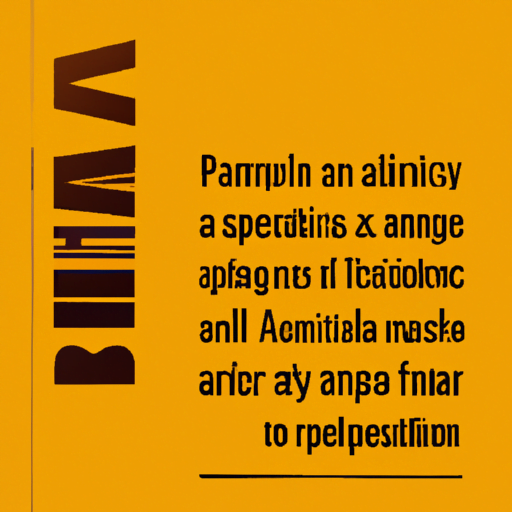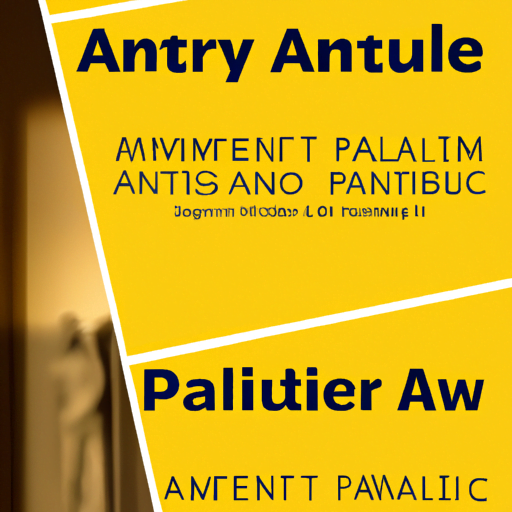
-
Table of Contents
- Typography in Museum Brochures: Balancing Information and Aesthetics
- The Role of Typography in Museum Brochures
- Strategies for Balancing Information and Aesthetics
- 1. Choose Appropriate Fonts
- 2. Establish a Clear Hierarchy
- 3. Pay Attention to Readability
- 4. Use Visual Elements to Enhance Aesthetics
- 5. Experiment with Layout and Alignment
- Case Studies: Effective Typography in Museum Brochures
- 1. The Metropolitan Museum of Art
- 2. The Louvre Museum
- Conclusion
Typography in Museum Brochures: Balancing Information and Aesthetics

Typography plays a crucial role in the design of museum brochures. It serves as a visual language that communicates information, sets the tone, and enhances the overall aesthetic appeal of the brochure. Finding the right balance between information and aesthetics is essential to create an engaging and informative experience for visitors. In this article, we will explore the importance of typography in museum brochures and discuss strategies for achieving this delicate balance.
The Role of Typography in Museum Brochures
Typography is more than just selecting a font. It encompasses the arrangement, style, and appearance of text elements. In museum brochures, typography serves several important functions:
- Information Hierarchy: Typography helps establish a clear hierarchy of information, guiding visitors through the brochure and highlighting key points. By using different font sizes, weights, and styles, important information can be emphasized, while secondary details can be presented in a more subtle manner.
- Readability: The primary purpose of a museum brochure is to convey information to visitors. Typography plays a vital role in ensuring that the text is legible and easy to read. The choice of font, size, and spacing should be carefully considered to enhance readability.
- Brand Identity: Museum brochures often reflect the brand identity of the institution. Typography can help convey the museum’s personality, values, and aesthetic style. Consistency in typography across various marketing materials helps strengthen the brand image.
- Visual Appeal: Typography is a powerful visual tool that can evoke emotions and create a sense of visual harmony. The right combination of fonts, colors, and layout can enhance the overall aesthetic appeal of the brochure, making it visually engaging and memorable.
Strategies for Balancing Information and Aesthetics
Achieving a balance between information and aesthetics in museum brochures requires careful consideration of various typographic elements. Here are some strategies to help you strike the right balance:
1. Choose Appropriate Fonts
The choice of fonts sets the tone for the entire brochure. It is important to select fonts that align with the museum’s brand identity and the overall theme of the exhibition. Serif fonts, such as Times New Roman, can convey a sense of tradition and elegance, while sans-serif fonts, like Helvetica, give a more modern and clean look. Experimenting with different font combinations can create visual interest while maintaining readability.
2. Establish a Clear Hierarchy
Establishing a clear hierarchy of information is crucial to guide visitors through the brochure. Use font size, weight, and style variations to differentiate between headings, subheadings, and body text. Important information, such as exhibition titles or event dates, should be prominently displayed, while supporting details can be presented in a more subdued manner. Consistency in the hierarchy across the brochure ensures a cohesive and organized reading experience.
3. Pay Attention to Readability
Readability should be a top priority when designing museum brochures. Consider the target audience and adjust the font size accordingly. Avoid using fonts that are too small or decorative, as they can hinder legibility. Adequate line spacing and paragraph spacing also contribute to readability. Additionally, ensure there is sufficient contrast between the text and background to make reading effortless.
4. Use Visual Elements to Enhance Aesthetics
Typography can be enhanced by incorporating visual elements into the design. Consider using drop caps, pull quotes, or decorative dividers to break up the text and add visual interest. However, it is important to use these elements sparingly to avoid overwhelming the reader. The visual elements should complement the typography and not distract from the main content.
5. Experiment with Layout and Alignment
The layout and alignment of text can significantly impact the overall aesthetic appeal of the brochure. Experiment with different layouts, such as grid-based or asymmetrical designs, to create visual variety. Aligning text elements to a grid or using justified alignment can create a sense of order and professionalism. However, be cautious with justified alignment, as it can sometimes result in uneven spacing between words, affecting readability.
Case Studies: Effective Typography in Museum Brochures
Let’s explore some real-world examples of museum brochures that effectively balance information and aesthetics through typography:
1. The Metropolitan Museum of Art
The Metropolitan Museum of Art in New York City is known for its exceptional design and typography. Their brochures feature a combination of serif and sans-serif fonts, creating a harmonious blend of tradition and modernity. The use of large, bold headings and clear hierarchy ensures that important information stands out, while the body text remains legible and easy to read.
2. The Louvre Museum
The Louvre Museum in Paris is renowned for its iconic pyramid entrance and its brochures reflect the museum’s grandeur. The brochures use elegant serif fonts that evoke a sense of history and sophistication. The typography is carefully aligned and spaced, creating a balanced and visually pleasing layout. The use of subtle decorative elements adds a touch of elegance without overwhelming the text.
Conclusion
Typography plays a vital role in museum brochures, balancing information and aesthetics to create an engaging and informative experience for visitors. By carefully selecting appropriate fonts, establishing a clear hierarchy, prioritizing readability, incorporating visual elements, and experimenting with layout and alignment, museum brochures can effectively communicate information while captivating the audience visually.
Remember, typography is not just about the font selection; it is about creating a harmonious visual language that enhances the overall aesthetic appeal of the brochure. By striking the right balance between information and aesthetics, museum brochures can leave a lasting impression on visitors and contribute to a memorable museum experience.
